Abstract
Two groups of pigeons received daily discrimination training at two values on a line-tilt continuum. S+ (VI 1) and S− (EXT) intervals alternated, and a 30-sec criterion of no responding to S− was required before S+ returned. Rates of responding to S+ showed two separate contrast effects: at an intermediate stage of training a high peak rate appeared which declined, later in training, to a stable level still in excess of the VI baseline rate. The peak rate was correlated with the total number of responses to S−, while the final rate was not; suggesting that the peak rate and final rate may not be functions of the same variable. These results were compared with performance on a red-green discrimination where the two stages were not so clear. A line-tilt discrimination was repeated with fixed length S− intervals terminated by TO, and showed the same contrast magnitude in the final rate without any peak. The peak rate was interpreted as an effect of the `punishment' contingency where responding to S− prolongs S− for 30 sec, while the final rate was taken to be analogous to previous demonstrations of contrast.
Full text
PDF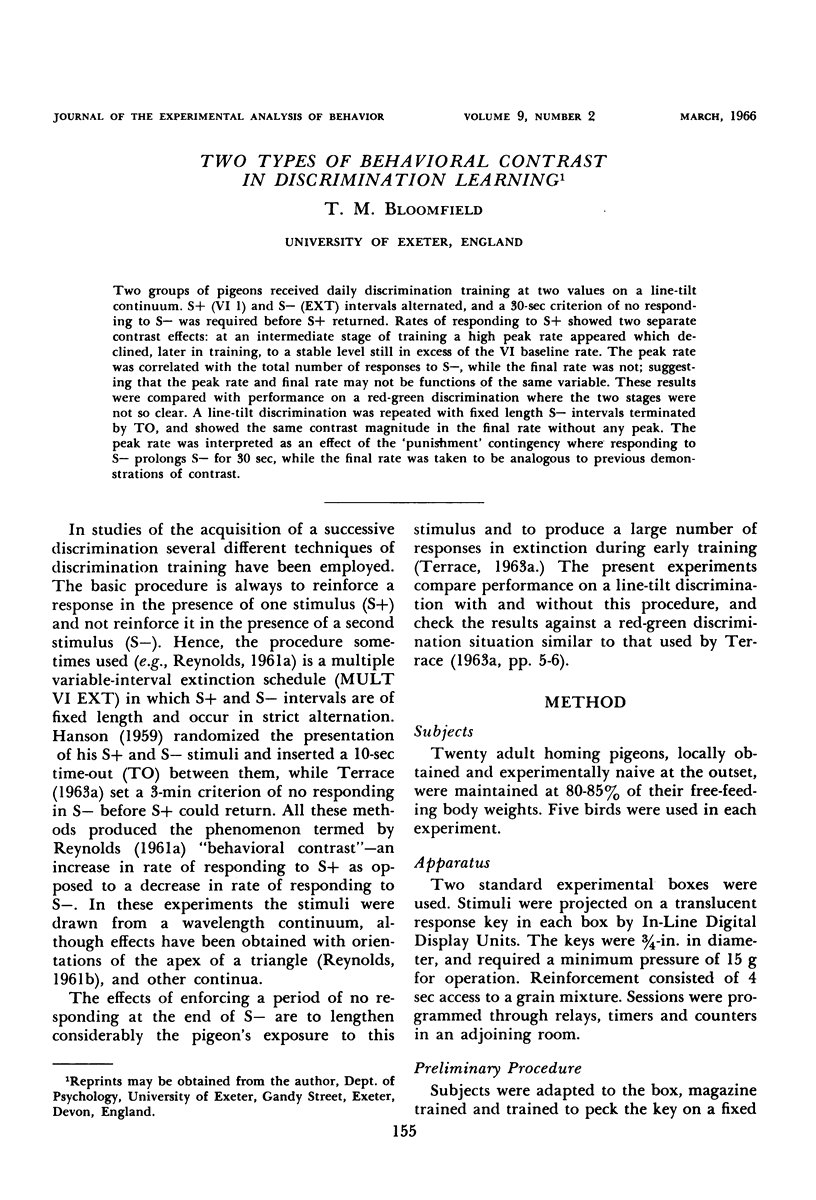
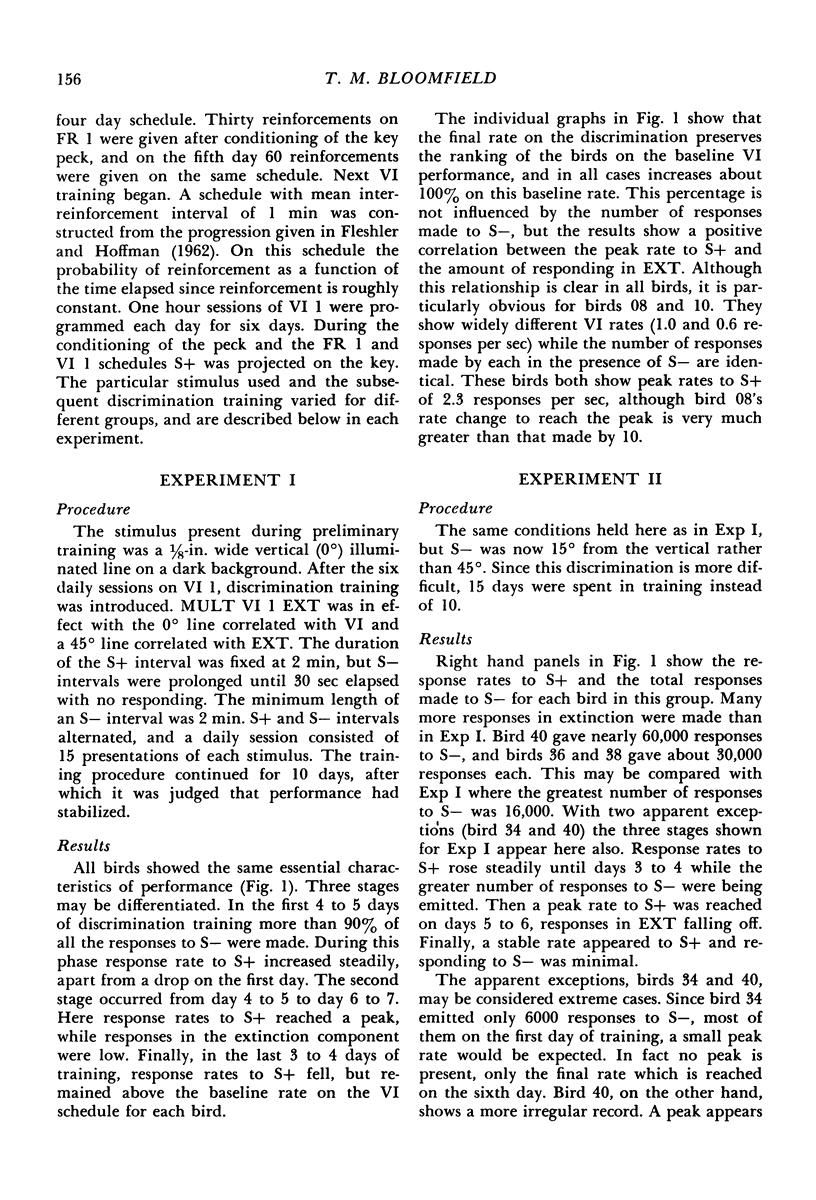
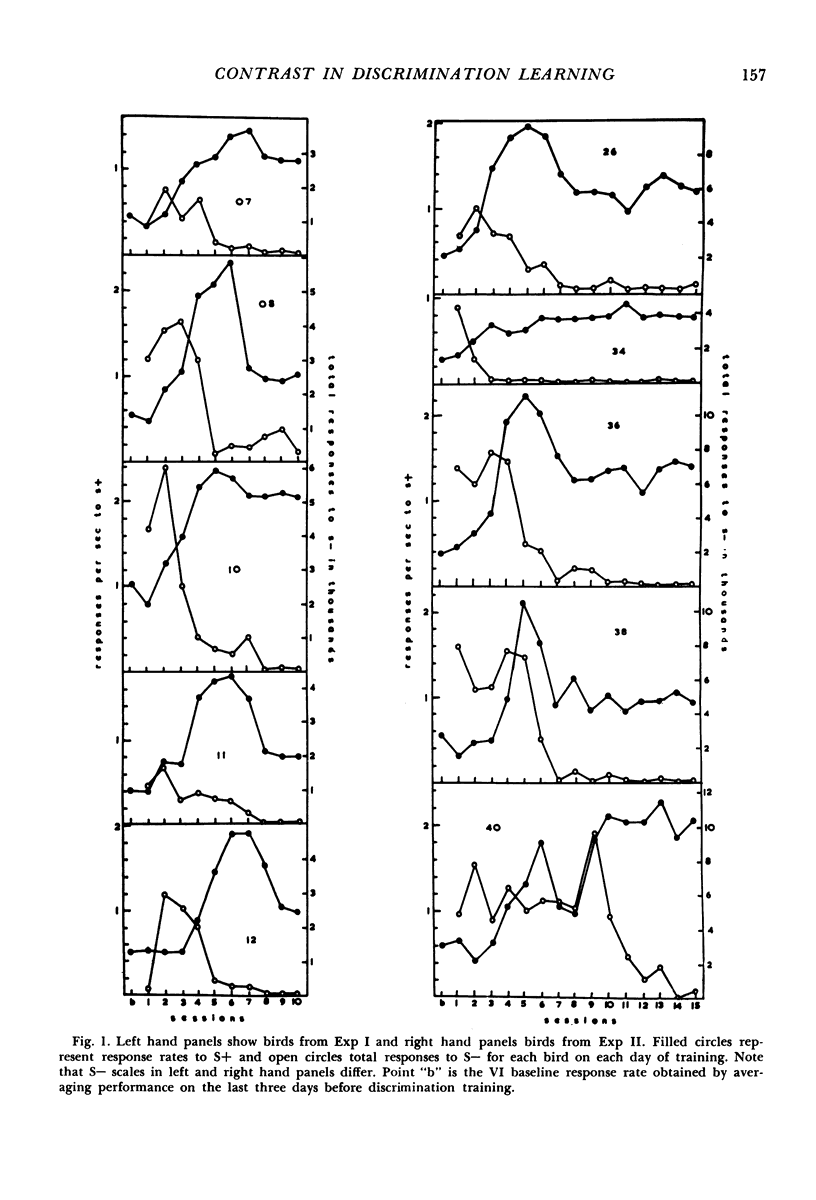
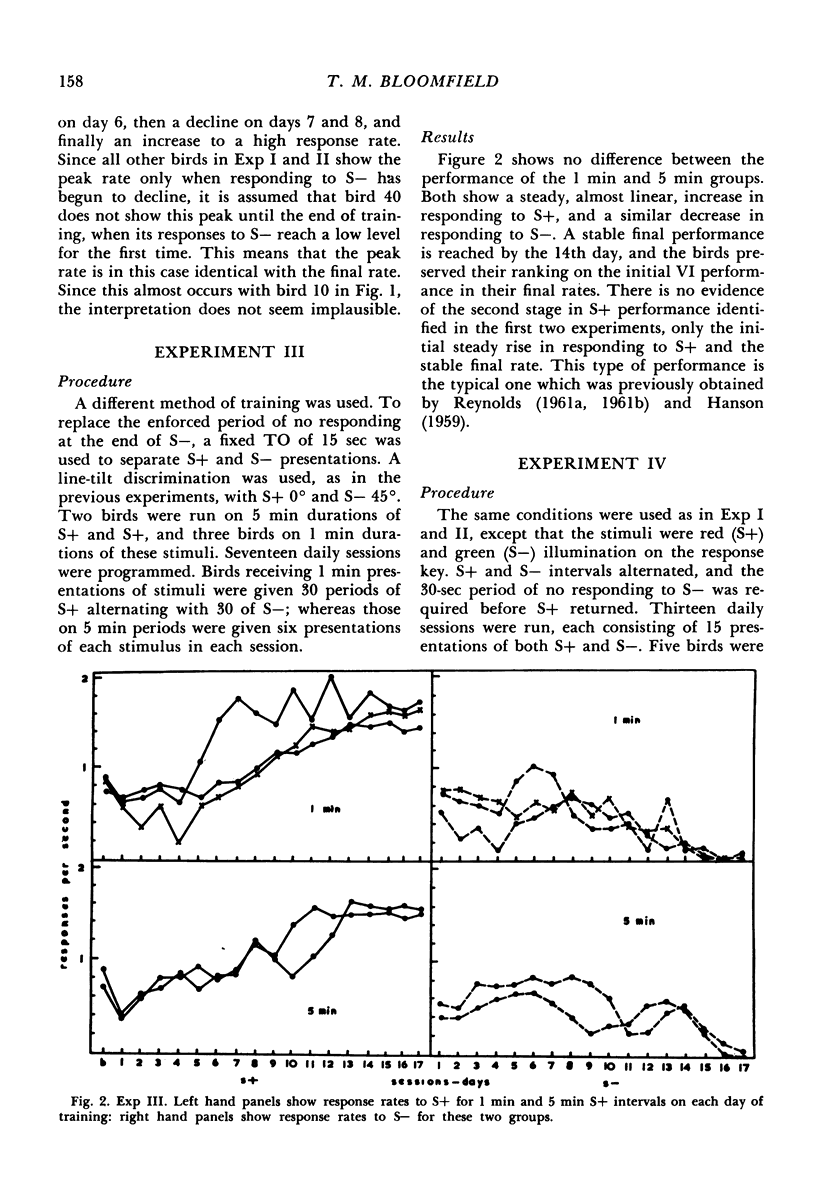
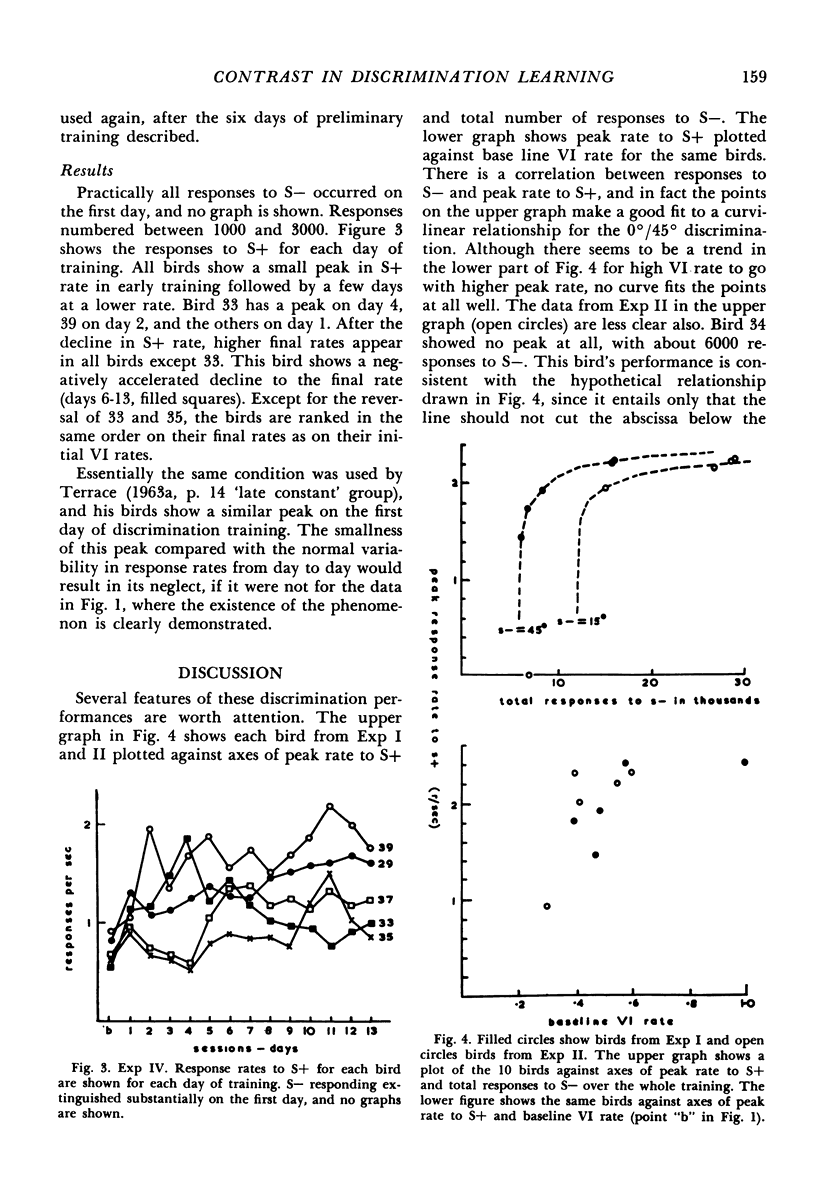
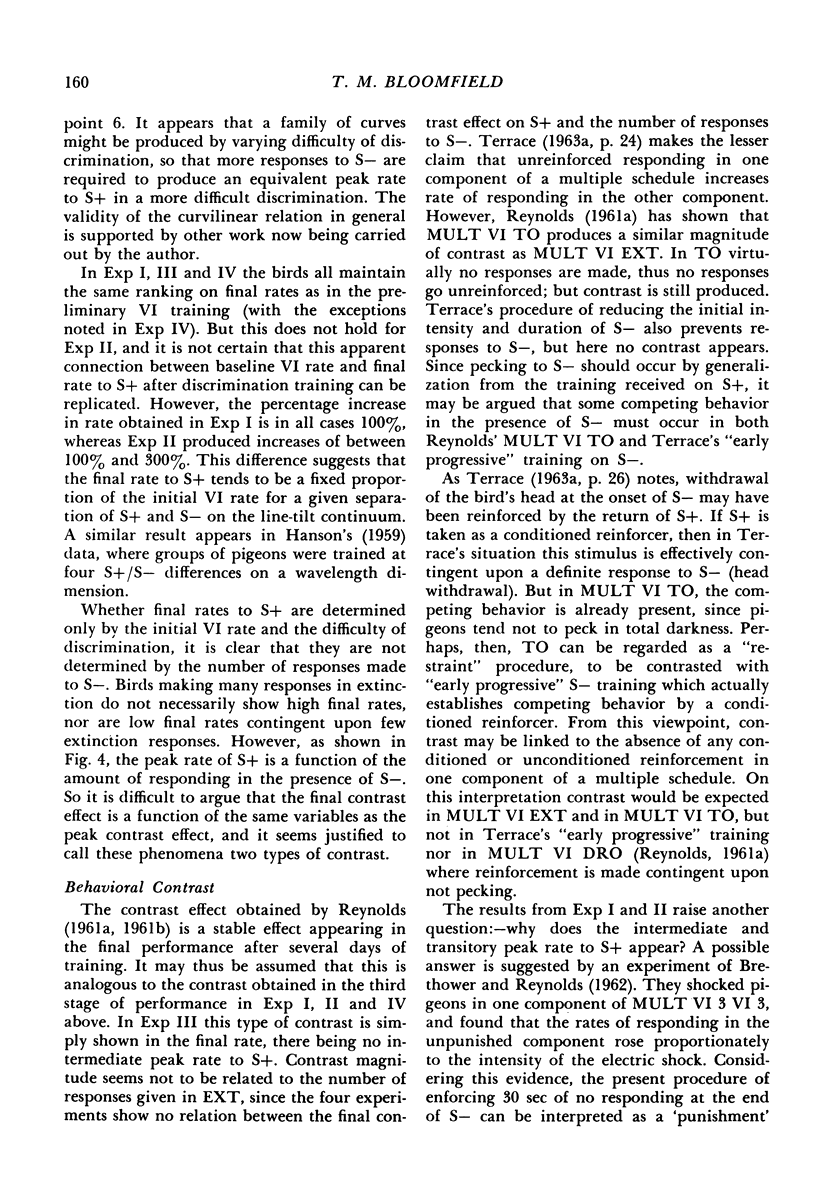
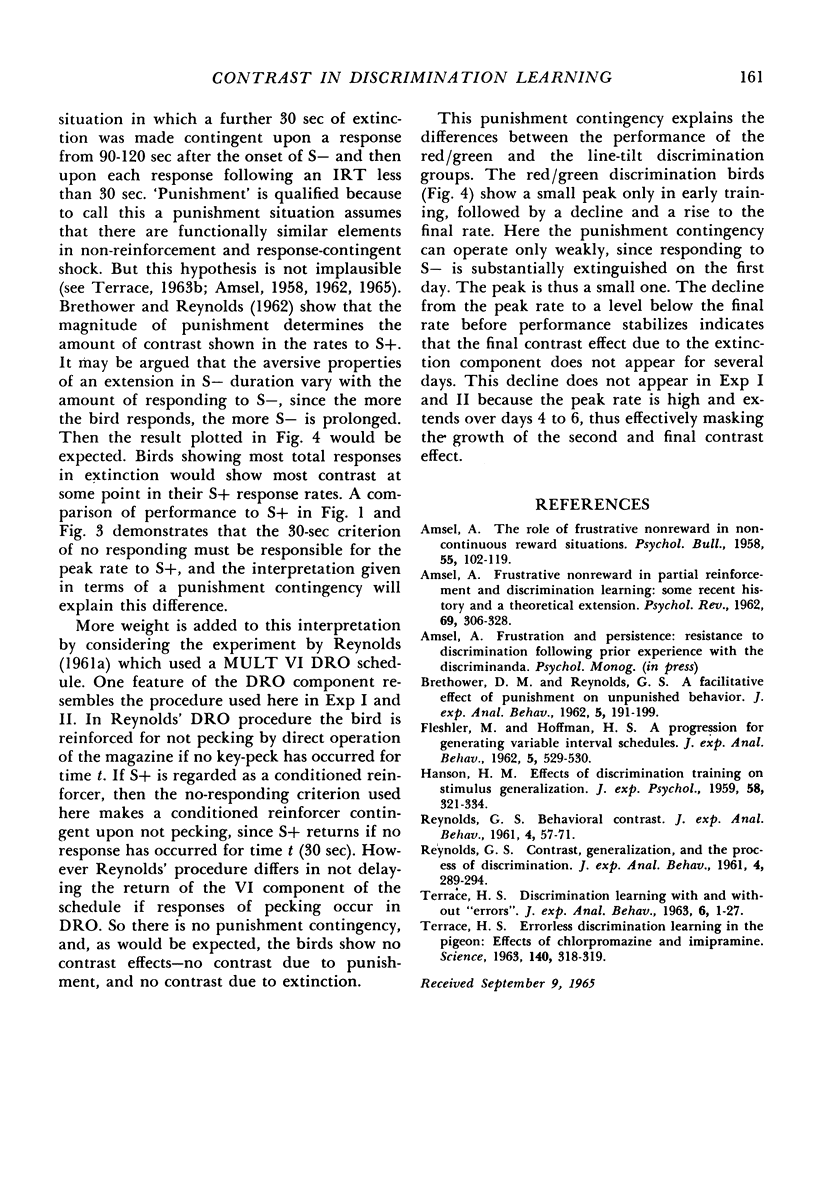
Selected References
These references are in PubMed. This may not be the complete list of references from this article.
- AMSEL A. Frustrative nonreward in partial reinforcement and discrimination learning: some recent history and a theoretical extension. Psychol Rev. 1962 Jul;69:306–328. doi: 10.1037/h0046200. [DOI] [PubMed] [Google Scholar]
- AMSEL A. The role of frustrative nonreward in noncontinuous reward situations. Psychol Bull. 1958 Mar;55(2):102–119. doi: 10.1037/h0043125. [DOI] [PubMed] [Google Scholar]
- BRETHOWER D. M., REYNOLDS G. S. A facilitative effect of punishment on unpunished behavior. J Exp Anal Behav. 1962 Apr;5:191–199. doi: 10.1901/jeab.1962.5-191. [DOI] [PMC free article] [PubMed] [Google Scholar]
- FLESHLER M., HOFFMAN H. S. A progression for generating variable-interval schedules. J Exp Anal Behav. 1962 Oct;5:529–530. doi: 10.1901/jeab.1962.5-529. [DOI] [PMC free article] [PubMed] [Google Scholar]
- HANSON H. M. Effects of discrimination training on stimulus generalization. J Exp Psychol. 1959 Nov;58:321–334. doi: 10.1037/h0042606. [DOI] [PubMed] [Google Scholar]
- REYNOLDS G. S. Behavioral contrast. J Exp Anal Behav. 1961 Jan;4:57–71. doi: 10.1901/jeab.1961.4-57. [DOI] [PMC free article] [PubMed] [Google Scholar]
- REYNOLDS G. S. Contrast, generalization, and the process of discrimination. J Exp Anal Behav. 1961 Oct;4:289–294. doi: 10.1901/jeab.1961.4-289. [DOI] [PMC free article] [PubMed] [Google Scholar]
- TERRACE H. S. Discrimination learning with and without "errors". J Exp Anal Behav. 1963 Jan;6:1–27. doi: 10.1901/jeab.1963.6-1. [DOI] [PMC free article] [PubMed] [Google Scholar]
- TERRACE H. S. Errorless discrimination learning inthe pigeon: effects of chlorpromazine and impiramine. Science. 1963 Apr 19;140(3564):318–319. doi: 10.1126/science.140.3564.318. [DOI] [PubMed] [Google Scholar]


